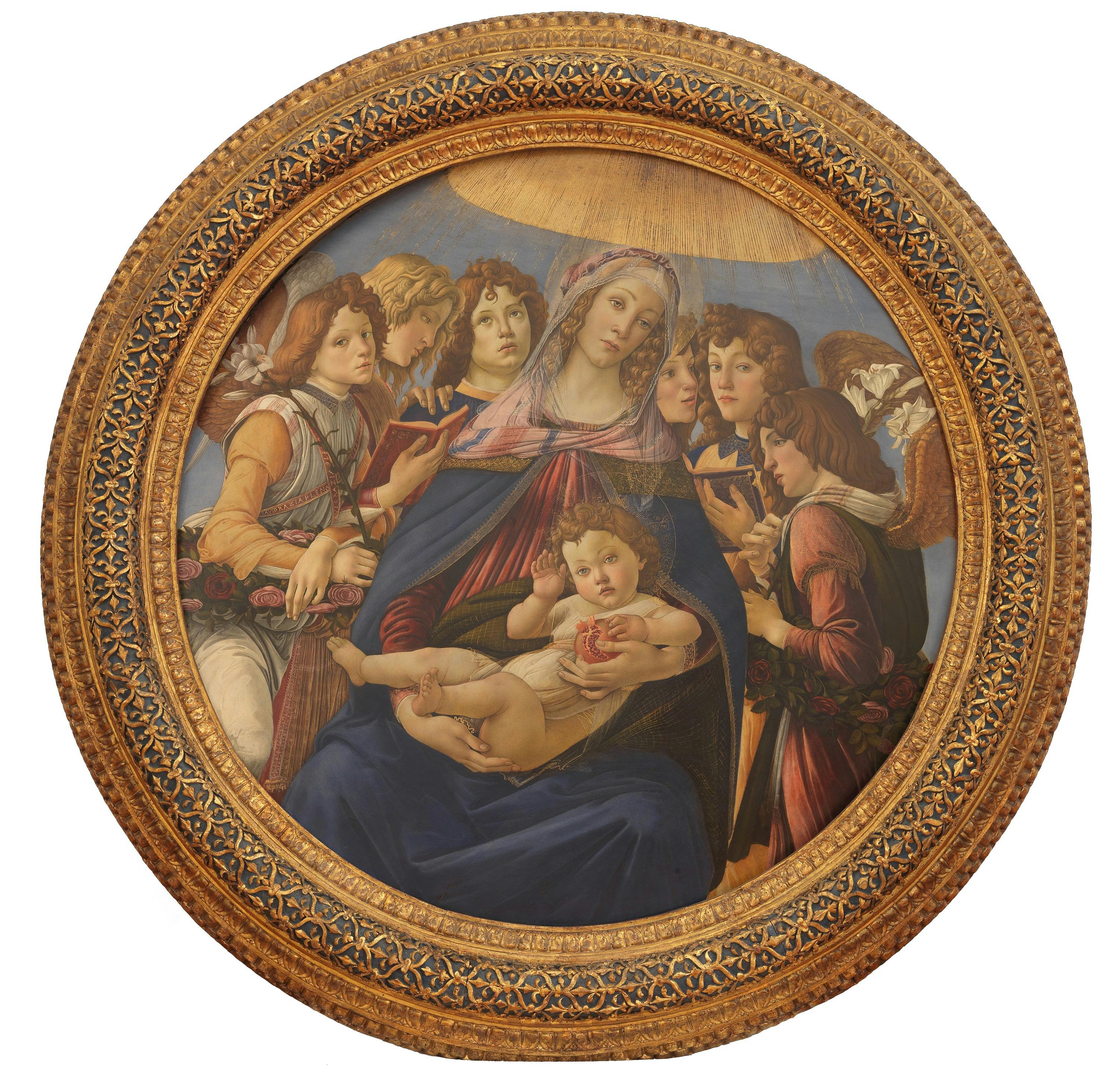Virgin and Child with Angels ('Madonna of the Pomegranate')
Sandro Botticelli (Firenze, 1445-1510)
On his mother's lap, Baby Jesus grabs the pomegranate handed to him by Mary: a fruit that was considered a symbol of Christ's passion, whose red kernels symbolize the blood shed by Jesus Christ for the salvation of humanity. Two angels are carrying lilies and roses, flowers traditionally associated with Mary and her virginity. The angel on the left is wearing a robe and an embroidered stole with the prayer AVE MARIA GRATIA PLENA. From above, a luminous halo is branching out, an emanation of divine grace. Despite the circular format, which was used for sacred images intended for secular contexts and was often accompanied by compositions of a more intimate tone than the paintings intended for churches, this sacred image is characterized by the composition's strict symmetry, monumentality, and solemn character. The thoughtful faces of the figures express a certain sadness, foreshadowing the fate of Jesus.
Botticelli's painting is still in its original frame, a rather exceptional circumstance for such an ancient work. Made of carved, gilded, and painted wood, it is decorated along the circumference with gold lilies on a blue background. Finely crafted in a Florentine workshop of expert woodworkers, it was attributed to both Giuliano da Maiano (ca. 1432-1490) and Giuliano da Sangallo (1445-1516).
There is a tendency to relate this large panel to a document from 1487 concerning a payment to Sandro Botticelli for the execution of a tondo with the image of the Virgin destined to the Audience Hall of , an administrative body of the Florentine Republic (Magistrato dei Massai di Camera). It is uncertain whether this institution was located in Palazzo della Signoria (Palazzo Vecchio) or in Palazzo del Podestà (now the Bargello National Museum), which it occupied when it was suppressed in 1533.
In the 17th century, the painting became part of the collection of Cardinal Leopold de' Medici (1617-1675), one of the most important collectors of the dynasty.
It has been preserved at the Uffizi since 1780.
R. Lightbown, Botticelli. Complete catalogue, Londra 1978, II, pp.65-66; R. J. M. Olson, An old mistery solved: the 1487 payment document to Botticelli for a tondo, in “Mitteilunges des Kunsthistorschen Institutes in Florenz”, XXXIX, 1995, pp. 393-396; A. Cecchi, Botticelli, Milano 2005, pp. 242, 281 note 120-127
